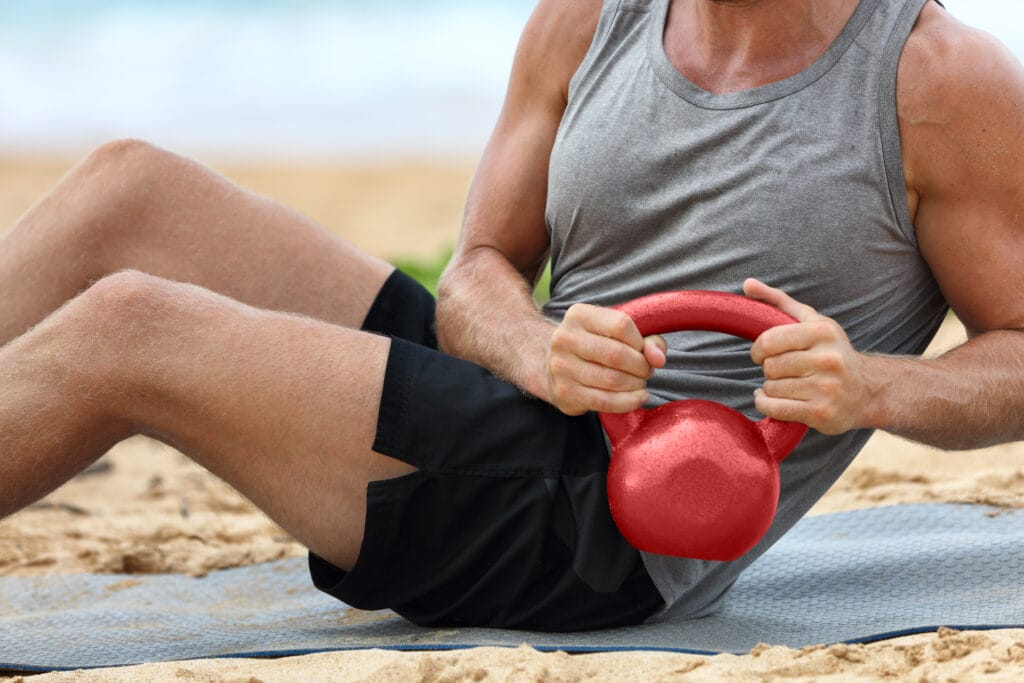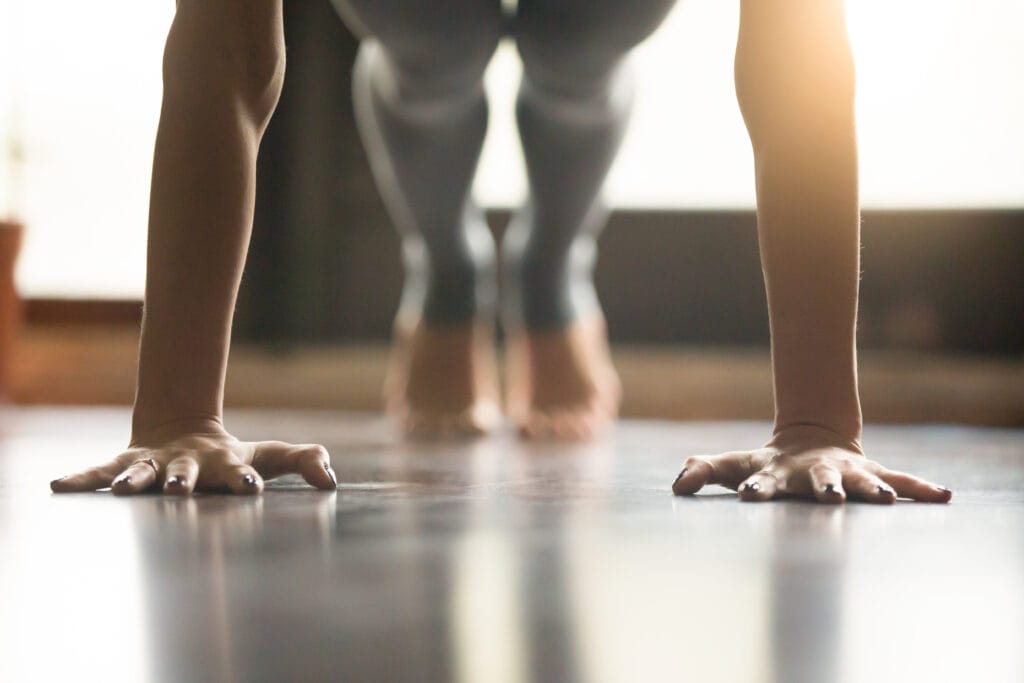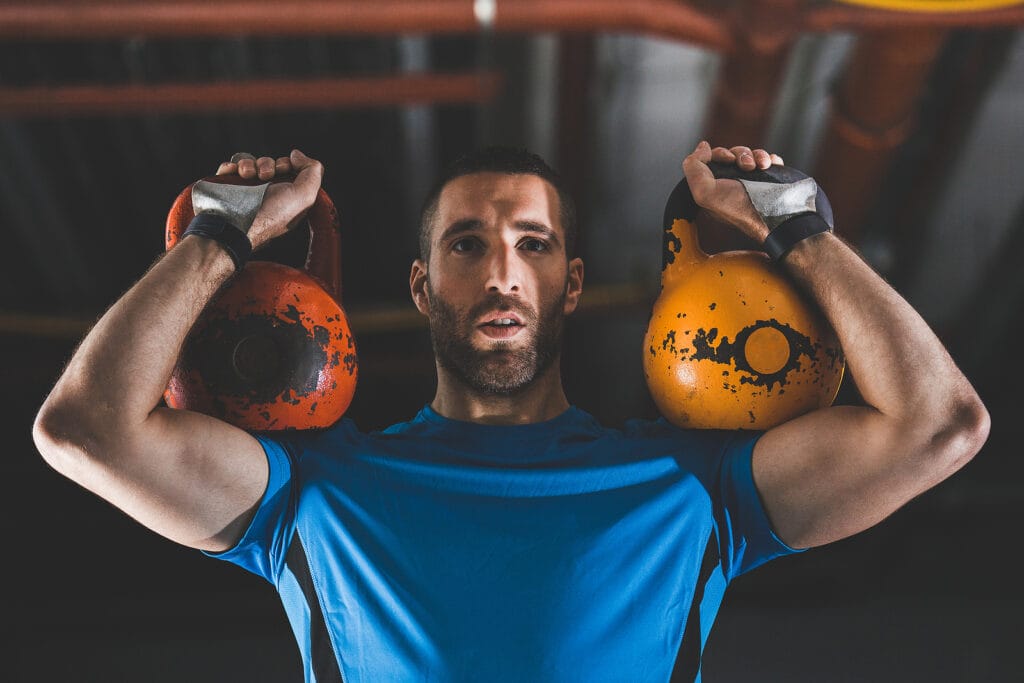
Functional training has been used by physical therapists and athletes for years, but it’s gained significant popularity in recent years, due to its emphasis on movements that mimic real-life activities and improve overall functional fitness.
It may sound like some fancy technique, but functional training really just describes the process of using task-specific exercises to improve performance.
And whether you’re recovering from an injury or simply trying to improve overall strength and performance, incorporating functional training into your home routine is always a great idea.
Not only can it help you enhance performance and prevent injuries, but it can help improve your ability to perform everyday activities with ease and confidence as well.
In this article, we’ll explore the principles of functional training, discuss its benefits, and provide practical tips on how to integrate it into your home gym routine effectively.
First things first though…
What is Functional Training?
Functional training focuses on exercises and movements that improve your ability to perform daily tasks, sports-specific activities, or other functional movements with efficiency and ease.
Unlike traditional strength training, which often isolates individual muscle groups, functional training emphasizes integrated movements that engage multiple muscle groups and joints simultaneously.
In other words, it gets you using muscle groups that are often used together in the real world.
A perfect example of a functional training exercise would be a golfer practicing a golf swing against resistance, either from a band or using an adjustable pulley on a functional trainer.
It’s easy to imagine functional training from an athletic perspective, but there are plenty of non-athlete examples as well.
For example, a worker who spends their days loading/unloading boxes could benefit from doing trunk rotational exercises to mimic the movement of lifting and placing said boxes.
In the rehab world, there are tons of these examples.
As a physical therapist myself, I use some form or functional training or another with every patient I see.
I work primarily with the elderly these days and I have most of ’em perform sit-stand transfers from a chair as a leg strengthening exercise.
Does this count as functional training?
Most certainly.
Not only is it strengthening every muscle in their legs, but it’s also making them more efficient with standing up, something we all have to do every day.
Anyway, the tasks performed during functional training can vary greatly, but there are some features they all have in common.
Key Principles of Functional Training
Multi-Planar Movements
Functional training incorporates exercises that involve movements in multiple planes of motion.
Few things in the real world occur in one plane only, so it’s important to include movement in the different planes.
These include the sagittal (front-to-back), frontal (side-to-side), and transverse (rotational) planes.
You’ll notice that most functional training exercises involve rotation of some sort, which inevitably includes all of these planes of movement.
Core Stability and Strength
Another key principle is that pretty much all functional training focuses on core stability.
This not only improves the performance of the task, but it also helps prevent injury throughout the day.
It’s crucial to emphasize core stability and strength by incorporating exercises that engage the deep abdominal muscles, obliques, lower back, and pelvic floor muscles to enhance posture, balance, and overall stability.
Functional Movement Patterns
Focus on exercises and movements that mimic real-life activities, such as squatting, lifting, pushing, pulling, bending, twisting, and reaching.
Basically, if it’s an activity that includes any of the above movements, it’ll count as functional training.
Working on these movements will help to improve functional strength, endurance, and performance in daily tasks and recreational activities.
Balance and Coordination
As you become more experienced, you can bump things up a notch by incorporating balance and coordination exercises into your routine.
Examples include single-leg movements, stability ball exercises, and proprioceptive training, to enhance neuromuscular control and overall body awareness.
You can easily do this by using a balance device like a BOSU ball or a Swiss ball – these devices instantly make any exercise significantly more challenging.

Benefits of Functional Training in Your Home Gym
Improved Functional Fitness
Incorporating functional exercises and movements into your workout routine can improve overall functional fitness, performance, and efficiency in daily activities.
Basically, if you’ve trained doing certain activity-specific exercises, similar activities should start feeling easier.
For example, we could consider your common squat thrust with dumbbells a functional training exercise specific to lifting a box and putting in on a shelf.
Including this exercise in your workouts will likely make lifting a box and putting it on a shelf in the real world considerably easier and the more you do it, the less fatigued you’ll feel.
And the same goes for sports-specific and recreational tasks as well.
Injury Prevention and Rehabilitation
Functional training can also help improve joint stability, flexibility, and mobility, all of which is helpful when it comes to reducing the risk of injuries during any activity.
Again, functional training prepares your body for doing these tasks, strengthening the specific muscles which are activated during said activities.
And the stronger these muscles are, the less likely you are to hurt yourself from poor stabilization (or poor form).
Functional training can also be used to help recover from injuries.
Most functional training includes core stabilization to one degree or another and improving core stability is key to rehabbing pretty much any back or hip injury.

Versatility and Adaptability
Functional training exercises often require minimal equipment and space, making them ideal for home gym settings.
So by incorporating versatile and adaptable exercises, you can maximize your home gym space and resources effectively.
Functional training exercises can be done from any position, including sitting, standing, or lying in bed – so regardless of your mobility level, you’ll be able to find exercises to fit your situation.
And again, you don’t need any fancy fitness equipment to train effectively.
A complete functional trainer certainly comes in handy, but you can also use resistance bands, dumbbells, a landmine station, kettlebells, or even cans of soup (depending on your needs).
Time-Efficient Workouts
Functional training often includes exercises that work several muscles groups at the same time, making them efficient at getting your heart rate up and burning calories.
They can also involve high-intensity interval training (HIIT) principles, incorporating short bursts of intense exercise followed by brief rest periods to maximize calorie burn.
So, if you’re looking for a faster, more efficient workout, functional training is a great option.
Practical Tips for Integrating Functional Training into Your Home Gym
Assess Your Space and Equipment
Evaluate your home gym space, layout, and available equipment to determine how you can incorporate functional training exercises and movements effectively.
If you have a dedicated workout space, this could mean setting up a resistance band or landmine station.
If you don’t have a dedicated home gym area, this could also mean simply finding some clear floor space that’ll give you enough room to exercise.
Consider Investing in Versatile Equipment
If you’e got the room and budget, you may want to think about investing in multi-functional equipment that’ll make functional training more convenient.
As mentioned earlier, equipment options include:
- Resistance bands
- Kettlebells
- Dumbbells
- Stability balls
- Medicine balls
- TRX suspension trainers
- Functional trainers
Create a Balanced Routine
When creating your workouts, try to include a balanced mix of functional exercises.
And if you’re training to improve a specific activity or sports-specific task, make sure you include this movement in your routing.
Examples of functional training exercises include:
- Squats
- Lunges
- Planks
- Deadlifts
- Rotational trunk movements (chopping wood, trunk rotations, etc)
- Dynamic stretches
Keep in mind, the goal is to target and combine different muscle groups and movement patterns effectively.
Consult a Fitness Professional
When in doubt, consider consulting a certified fitness professional or personal trainer with experience in functional training to develop a personalized home gym workout plan tailored to your goals.
And if you’re rehabbing from your injury, it’s best to consult your physician or local physical therapist for guidance in exercise choice and how to progress.
As always, never exercise beyond your comfort level and always double check with your physician before doing any new exercise you aren’t sure about.
Safety is always first and foremost.
Final Thoughts
Well, I think that’ll about do it.
As I mentioned earlier, functional training has been used in rehab and sports settings for a long time and as a therapist myself, I can tell ya this stuff works.
And depending on what kid of exercises you’re currently doing, you may be incorporating some functional training moves into your routines already.
Either way, functional training offers a holistic approach to fitness and performance by emphasizing movements that improve your ability to perform daily tasks, sports-specific activities, and any other functional movements.
And adding functional training principles and exercises into your home gym workouts can certainly help you maximize your performance with daily tasks.
But it can also help you prevent injuries and enhance your overall functional fitness and well-being.
In other words, this stuff makes you more durable to the real world.
Whether you’re a beginner or a seasoned athlete, functional training provides a versatile and adaptable approach to fitness that can help you achieve your goals.
So, if you’re looking to be the best version of yourself possible, adding functional training to your home gym is a smart idea.


